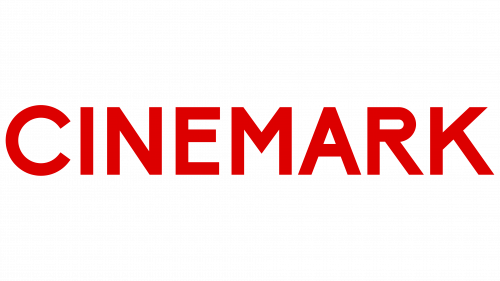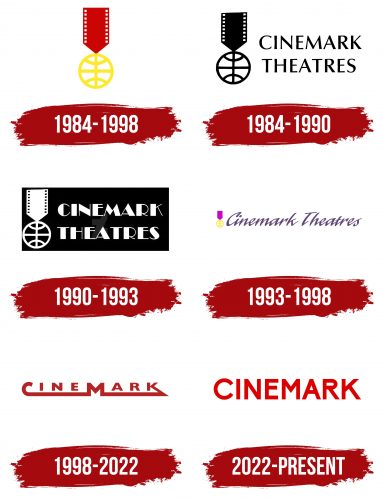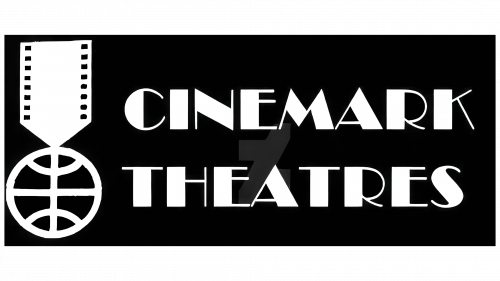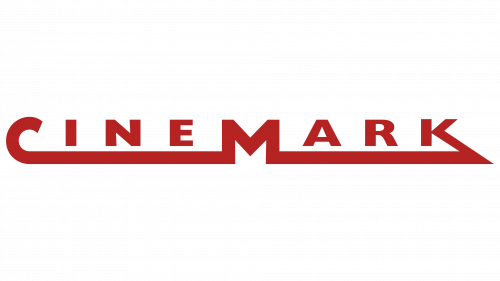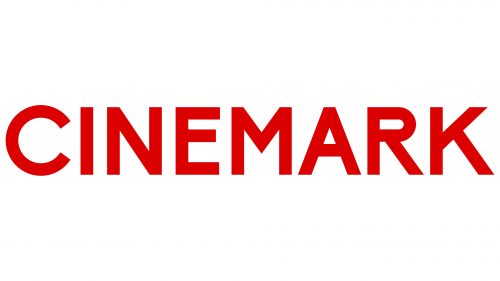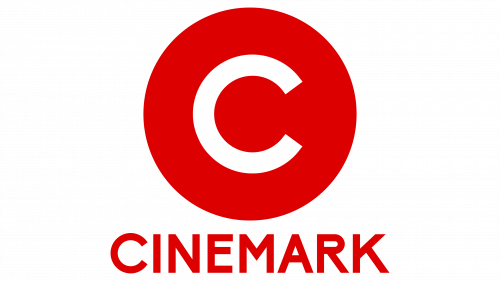The Cinemark logo evokes a sense of anticipation and excitement before an upcoming movie. The stylish and modern design highlights the company’s innovation, continually introducing new developments in the theater industry to provide audiences with an unprecedented audiovisual experience.
Cinemark: Brand overview
Mitchell Theaters LLC was established in Texas by brothers Lee Roy and Tandy Mitchell in the 1960s when Cinemark’s history began. This business was a forerunner and established the theater chain’s subsequent growth framework.
Lee Roy Mitchell and a group of investors established Cinemark USA, Inc. in Plano, Texas, in 1984. This officially marks the start of the company’s history. The corporation began by purchasing and operating tiny theaters in Texas and the surrounding regions.
The firm experienced incredible development throughout the 1980s. The corporation aggressively increased its footprint by purchasing and constructing new theaters. Mitchell’s plan focused on small and medium-sized towns with less fierce competition.
When the company opened its first multiplex theater with multiple screens in 1989, it marked a crucial turning point in its development. Because of this innovation, the company could draw in more viewers and offer a wider range of films.
The enterprise started to expand internationally in the 1990s. In 1993, the company’s first theater outside of the US debuted in Santiago, Chile. This move enabled the firm to enter the Latin American market actively.
1995 saw the inauguration of theaters in Mexico as part of the company’s ongoing Latin American growth. Subsequently, this nation emerged as a crucial non-US market for the corporation.
1997 was a noteworthy year for the company. In Dallas, Texas, the firm launched its first “Hollywood USA” theater, which raised the bar for the sector with its opulent decor and cutting-edge technology.
With the launch of its first theater in Taiwan in 1998, the enterprise debuted in the Asian market. This expansion exemplified the company’s aspirations to expand internationally and diversify its business.
The brand eagerly adopted the new technical advancements in the movie theater industry in the 2000s. In 2005, the company started adding digital projectors to its cinemas, enhancing acoustic and visual quality.
An important turning point in the company’s history occurred in 2006. By acquiring Century Theatres, the business greatly increased its footprint in the western part of the country. This agreement increased the company’s portfolio by over 80 theaters.
By launching an initial public offering (IPO) on the New York Stock Exchange, the company became a publicly traded entity in 2007. This gave the business access to more funding for expansion and improvement.
The enterprise introduced the XD (Extreme Digital Cinema) concept in 2008. These auditoriums featured larger screens and enhanced image and sound quality, giving the business a competitive edge.
2009, the brand added theaters in Colombia as part of its ongoing global growth. As one of the top theater operators in Latin America, this enhanced the company’s standing.
The company made technical advancements in the 2010s. In 2011, it started using 3D technology in its theaters, providing an enhanced cinematic experience for its patrons.
With the launch of its Connections loyalty program in 2013, the firm provided viewers with various incentives and savings. This initiative developed into a crucial instrument for drawing in and keeping clients.
In 2015, Movie Club was introduced, a membership service that provided members with monthly ticket discounts and other perks. This creative approach in the movie theater business enhanced patron loyalty.
2017, the company installed reclining chairs in multiple theaters as part of its ongoing modernization efforts. This increased audience comfort and drew in new viewers.
2018 was a year of continued technological advancement. The company introduced D-Box technology into a few theaters to provide customers with seats that move with the action on screen.
Celebrating its 35th anniversary in 2019, the brand remains one of the world’s biggest cinema chains. At this point, the firm ran over 500 theaters across Latin America and the United States.
Despite widespread difficulties facing the entertainment sector in 2020, the company invested to improve the cinematic experience. The corporation hastened contactless technology to increase client convenience and safety, such as digital tickets and smartphone ordering. Additionally, the firm increased the number of theaters it rents out for private watch parties, a service that allows small groups to watch movies.
In 2021, the company made deals with big studios to reduce the duration of a movie’s exclusive theatrical run in response to shifts in the film industry. Because of this, the corporation still had access to premiere screenings even as streaming services gained popularity. To further diversify its business, the firm increased the variety of alternative content it offered by adding broadcasts of concerts, sporting events, and theatrical productions.
In 2022, the corporation invested in new projection and sound systems as part of its ongoing theater modernization efforts. An improved XD (Extreme Digital Cinema) format with better picture and sound quality was released. The business also started a project to install solar panels and employ LED lighting to make its theaters more energy-efficient.
In 2023, the company increased its global footprint by building new cinemas in Latin America. Growth in Brazil and Colombia, where the corporation saw great potential, received special emphasis. With the “theater-restaurant” idea, which offers patrons an extended menu and in-theater dining service during movies, the firm continued experimenting with theater formats in the United States.
The company kept up its adaptations in response to shifting consumer tastes and technical advancements. The enterprise expanded its products beyond typical film screenings while focusing on delivering a quality moviegoing experience.
Meaning and History
What is Cinemark?
It is one of the world’s largest and best-known movie theater chains. Headquartered in the United States, it operates movie theaters throughout North and South America. The company is known for providing high-quality moviegoing experiences by offering state-of-the-art amenities such as digital projection, 3D capabilities, and luxury seating. To enhance the entertainment experience, it offers loyalty programs, advance ticket reservations and various concessions.
1984 – 1998
Rumor has it that the oldest Cinemark logo was borrowed from its parent company, Cinemark Corporation, founded in 1977. The emblem reflects the retro aesthetic of that era—very simple yet somewhat rough around the edges. The symbol for the theater chain was a stylized medal formed from a piece of film strip and a round globe. Each element holds a special meaning.
- A portion of the unfolded film strip appears as a vertical rectangle, with edges adorned by small white squares, emphasizing the company’s connection to the film industry.
- At the bottom of the film strip is an unusual triangular protrusion. This creates visual balance and directs the viewer to the logo’s main element—the yellow globe. Additionally, the triangle enhances the association with a medal on a ribbon, as without it, the characteristic shape wouldn’t be achieved.
- Attached to the film strip is a white circle with a yellow outline, divided into segments by thin lines representing a grid of parallels and meridians. This stylized globe symbolizes the theater chain’s global reach and significant expansion plans.
- The central part of the globe resembles a target. This suggests determination, precision, and foresight.
Overall, the emblem looks like a medal on a ribbon, a mark of distinction that signifies the company’s prestige and leadership. It aimed to become one of the world’s top theater chains by 1984. The medal symbolizes recognition of achievements, instilling trust in Cinemark among audiences.
The colors were also chosen purposefully, as they help create an emotional connection with the audience. Red is associated with energy and passion, while yellow represents joy and optimism. Together, they evoke the positive feelings typically experienced when watching movies.
1984 – 1990
In this version of the logo, the film strip has been shortened, making the stylized globe appear more prominent. Despite these changes, the symbol’s meaning remains the same: it still represents the company’s connection to the film industry, its global presence, and its pursuit of public recognition.
Next to the stylized medal is the inscription “CINEMARK THEATRES,” where the first word represents the brand name and the second its purpose. The text is split into two lines and centered for visual balance. This symmetry highlights the meticulousness of the cinema operator, who prioritizes the comfort of its audience. The designers used a uniquely shaped font characterized by:
- Contrasting thickness between the primary and secondary strokes
- Slight indentations at the ends of the glyphs
- Unevenly tapering and widening lines
- A combination of sharp angles and rounded edges
The expressive style of the font gives the text a dynamic quality, sparking interest in the forward-looking brand. This visual representation embodies the energy that drives Cinemark to expand and build new theaters with large auditoriums and vibrant interiors. However, the logo does not appear overly bright—it is rendered solid black. The monochrome emphasizes the company’s serious commitment to its work, ensuring audiences are satisfied with the films and the comfortable viewing experience.
1990 – 1993
The designers inverted the colors, turning the film strip, globe, and text white. A black base shaped like a horizontal rectangle was added to ensure the logo could be used on a light background. This creates the impression that all elements are now depicted in negative space. The strong visual contrast makes the emblem recognizable, which was precisely the goal of the theater chain.
The brand’s primary symbol remained unchanged because its elements convey the essence of Cinemark:
- The film strip fragment reflects the connection to movie screenings.
- The stylized globe symbolizes international presence.
- The medal on a ribbon signifies the desire to be a leader.
While keeping the graphic part intact, the designers completely reworked the wordmark to make the company name more memorable. The logo still features the two-level inscription “CINEMARK THEATRES,” but now the lines are left-aligned and approximately equal in length, achieved through balanced letter spacing.
The new font appears uneven due to the stark contrast between strokes: some look like massive quadrilaterals, while others resemble thin lines. This difference in thickness draws attention to the capital glyphs, whose bulkiness creates a sense of imbalance. The asymmetrical form aligns with the aesthetic of retro fonts used in old films. Examples of this style include Better Book Regular, VI Mai Anh H, and CF Metro Parisien Regular.
1993 – 1998
This logo opposes the previous version, lacking strict geometric shapes, dark color schemes, or sharp angles. The designers removed everything that hindered the perception of Cinemark as an entertainment brand. However, they retained their primary visual symbol as an award medal associated with leadership and great ambitions. But now it has been given vibrant colors:
- The film strip is now light purple with a lilac hue.
- The globe’s outlines are recolored in yellow, as in the original emblem.
The new color palette creates a positive atmosphere, reflecting the theater chain’s effort to provide the best movie-watching experience. The bright colors embody audiences’ positive emotions when they leave the theater after a screening.
The phrase “Cinemark Theatres” is rendered in an elegant script font, creating a sense of lightness and ease. The letters appear wave-like due to the slanted lines connected by smooth transitions. This design enhances visual dynamism, reflecting the brand’s activity as it gradually expands its network beyond the United States. The text’s soft form conveys comfort and high-quality service, while the muted purple color underscores a commitment to innovation.
1998 – 2022
In 1998, the company underwent a major reorganization, adopting an Art Deco style for its theaters, associated with the era of cinema’s rapid development. This allowed Cinemark to immerse its visitors in a retro atmosphere that became a widespread trend in the late 1990s. The brand’s logo also acquired some Art Deco characteristics to align with the new concept. These include:
- Clear and symmetrical shapes
- Minimalism with an emphasis on simplicity
- Numerous angles and straight lines
- A strict geometric structure
The first thing that stands out is the classic Art Deco-style font used for the letters “I,” “N,” “E,” “A,” and “R.” This font is characterized by wide, sharply defined strokes, giving the inscription a strong visual impact. The other letters have a unique design.
A long horizontal line extends from the “C” to the left side of the “M,” making the “C” resemble an inverted umbrella handle. A similar line extends from the “K” to the right side of the “M,” but with an angular edge. The contrast between rounded and sharp forms highlights the dynamism and variety of cinema. The line formed by the three letters symbolizes unity, including the continuity of the film strip. This is the only hint at the now-missing Cinemark emblem, which depicted an award as a film strip and a globe.
2022 – today
By 2022, the theater chain had become one of the largest in the United States and Latin America, necessitating a new logo that reflected its status as an international leader. Designers completely revamped the wordmark, as Art Deco had fallen out of fashion, giving way to modern minimalism.
Simplicity, clarity, and dynamism were the key principles guiding the creation of the new emblem. These are evident in the strict geometric font, where each letter consists of clean lines of uniform thickness. Visual dynamism is achieved through subtle nuances, such as:
- Raised horizontal strokes in the middle of the “E” and “R”
- The circular shape of the “C.”
- The pointed center of the “M.”
- The consistent angle of the diagonals in “N,” “R,” and “K”
While the designers completely changed the style of the text, it still retains some elements from the previous logo. This includes the absence of serifs and the cleanly cut tops of the “N,” “M,” and “A,” which enhance the dynamic feel. Thus, the new wordmark combines tradition and modernity to reflect the gradual evolution of the brand.
The bright red color symbolizes a drive for innovation, as Cinemark continually enhances its theaters, offering audiences standard conditions and audiences with giant screens, premium seating, and immersive sound. The red logo evokes associations with the thrilling experiences that the world of cinema and entertainment provides.
